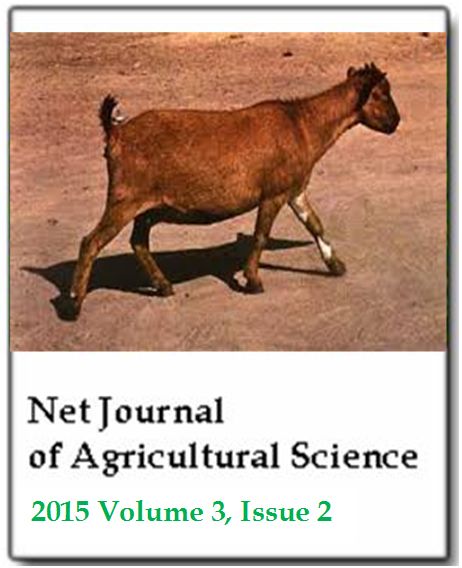A comparative study on growth, composition and sensory quality between farmed and wild Nile tilapia (Oreochromis niloticus)
Mary N. Muchiri, Jackin N. Nanua and David LitiNet Journal of Agricultural Science
Published: June 15 2015
Volume 3, Issue 2
Pages 56-61
Abstract
This study was conducted at Moi University, Kenya, to investigate the effect of fish diets on growth, chemical composition and organoleptic quality of farmed Nile tilapia (Oreochromis niloticus), and compared with wild tilapia from Lake Victoria. Fish were grown for six months in triplicates using three feeds: (i) maize bran, (ii) formulated diet containing maize bran, freshwater shrimp, soya bean and cotton seed cake and (iii) control without supplemental feed. Fish were weighed fortnightly, chemical composition was done monthly and sensory quality was carried out at the end of the experiment. There was significant difference (P < 0.05) in growth between fish fed on different diets. Fish fed on formulated diet recording the highest weight, while control fish had lowest weight. Diet had significant effect (P < 0.05) on the lipid content but no effect on the other constituents. Taste and texture of the cooked meat were significantly affected by diet type (P < 0.05), with wild tilapia being most preferred and maize bran fed fish being least preferred. This study shows that with proper diet formulation, acceptable composition quality, sensory characteristics and growth rate of farmed tilapia can be achieved without using expensive commercial feeds. Cheap, locally available fish feed is likely to increase uptake of fish farming, thus increasing protein sources for rural communities living far from fish sources such as lakes and seas.
Keywords: Aquaculture, Nile tilapia, fish feed, carcass quality, sensory quality.
Full Text PDF
